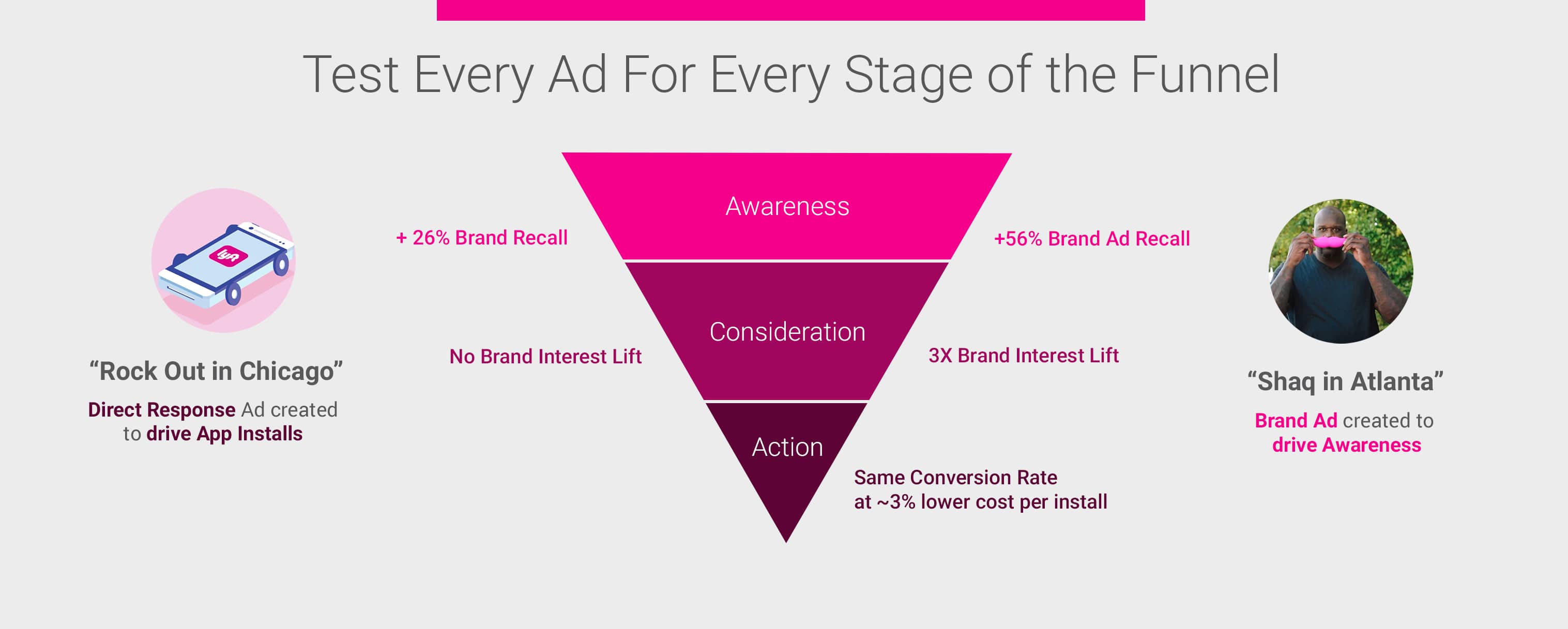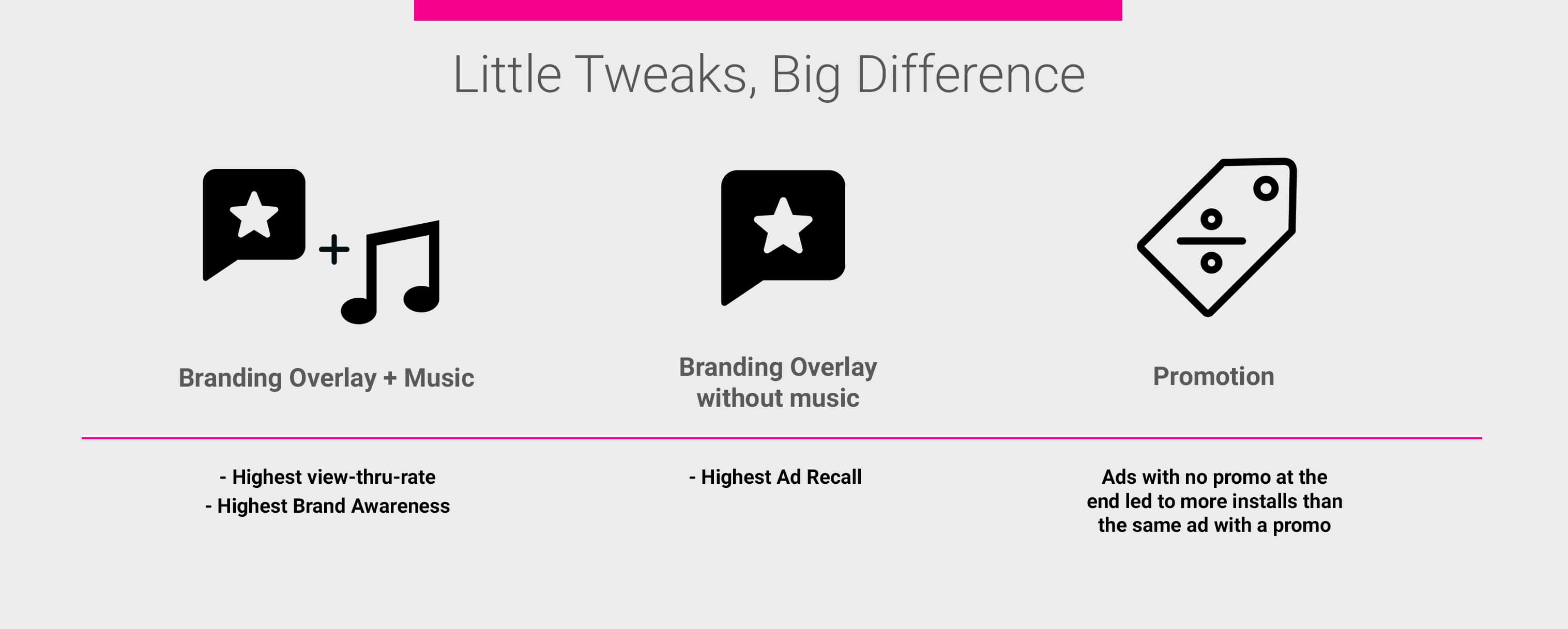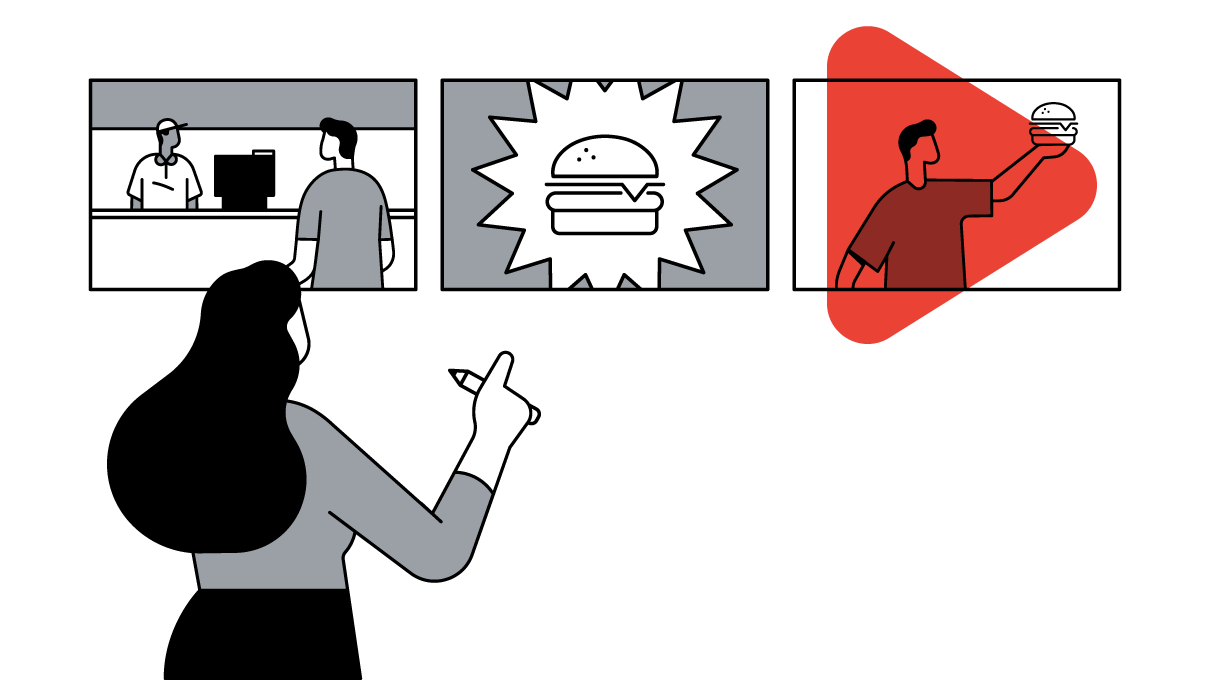This case study will help you:
- Learn ideas to make your direct response and brand ad creative work harder
- Understand how different creative approaches drive growth
- See how subtle variations in ads can affect consumer response
Marketers, how would you describe your direct response ads? Effective, attention-getting, hard-working? What about fun? We're talking Shaquille O'Neal undercover and pranking fans kind of fun? Even if it's not celebrity-laden, you probably have very different ads for direct response than for brand marketing.
For years, brand ads have been the show pony -- flashy and fun, trotted out on TV and YouTube to drive key upper-funnel metrics like awareness and interest -- while direct response ads have been the workhorse -- simple and straightforward, designed to move consumers from evaluation to action.
After countless hours of analyzing YouTube ads for successful traits, we wanted to see if we could upend some of these traditional notions, from the type of ad to the platform on which it ran. We wanted to think about ways brands can take their best creative and repurpose it to work harder, in more places. In this case, to test the effectiveness of videos meant to drive awareness to see whether they could also drive consumers to install mobile apps.
We used YouTube as our testing ground via TrueView app install format, since the platform gives ample opportunity for testing different versions of an ad.
Approach:
For this test, we partnered with Lyft. The popular ride-sharing app had just produced a series of entertaining brand videos, including Shaq disguised as a driver, Seattle Seahawk star Richard Sherman undercover and trash talking himself and members of the Golden State Warriors pranking a teammate. We tested these alongside Lyft's more traditional direct-response ad, edited several variants for each, and measured brand and direct response metrics for all videos.
We wanted to see whether an ad might be effective in areas other than its intended purpose. We took some of Lyft's most creative brand videos and repackaged them to run as TrueView for Mobile App ads. Using insights from analysis of thousands of YouTube videos as our guide, we A/B tested variations such as brand overlay, music, and promos, to determine which ads performed best in which areas -- from raising awareness to spurring action, like getting people to install the app. Finally, we used YouTube brand lift studies to measure brand impact and conversion data from Google Ads1 to measure app installs.
Here's a look at what we learned and how other brands can apply these lessons:
1. Measure Impact for Every Purpose on Every Kind of Ad
As marketers, we are in the habit of segmenting. We create brand ads with high-minded concepts to communicate emotion and a broader message; we create direct response ads to spur downloads for an app. As we make these different style ads, we test each one for just its intended purpose. Using Lyft's ads, this study showed us the benefit of testing all creative across every aspect of the consumer's journey from brand measures (awareness lift, search interest lift) to performance measures (conversion rate, cost-per-install.) The ads that Lyft initially created as brand ads: Sports stars Shaquille O'Neal and Richard Sherman in fun, undercover Lyft spots, for example, also worked well as direct response ads.
The Shaq ad was so engaging to audiences that it made the YouTube Leaderboard for top ads that people choose to watch last June. Based on Lyft's data, it received 2x the brand lift vs one of Lyft's traditional direct response ads, which makes sense, because that is what it was designed to do, but what's interesting is that many of these ads performed better across the entire funnel, achieving higher click-through-rates, install rates and lower cost per acquisition vs a traditional performance piece. According to Lyft, the Shaq ad, for example received 8% higher CTRs than Lyft's traditional direct response ad and a similar conversion rate to those ads that were designed specifically to drive conversions, or installs. The lesson here: Make sure to test and learn how all your creative performs on various metrics.

2. Small Tweaks Make Big Differences
Once we had worked with Lyft to isolate the best performing creative, we tweaked it in small ways, running a series of A/B tests: music versus no music and brand overlays versus none.
In one test we ran, using Lyft ads of Seattle Seahawks player Richard Sherman in an Undercover Lyft spot, we uncovered some interesting insights. The brand overlay, placed in the first five seconds, encouraged people to watch more, leading to a higher view-through rate, helping drive greater brand awareness. The brand overlay with music also had a 1.2x higher view-through-rate than an overlay with no music, and 1.3x higher than an ad with music but no brand overlay, according to Lyft's data from the experiment.
The brand overlay also increased awareness, while adding music on top of the branding led to more than 3x increase in awareness compared to an ad that had no brand overlay.

3. Test Everything; Assume Nothing
On Lyft's top performing ad, with Shaquille O'Neal, we tested a promotional offer that ran across the bottom of the ad against the same ad with no promo. We were surprised to see that both variations had a similar click-through-rate. One unexpected finding: ads with no promotional offer led to more people installing the app. We would need to do more extensive testing to determine whether this was an anomaly, but it does reinforce our recommendation to keep on tweaking and testing.
As we face a world of new platforms and emerging technology, brands might feel like it's hard to reach your audience in all these disparate places. We believe the answer is a modern twist on an old-school solution: Good creative will never go out of style, the trick now is to find ways to take your best creative and test and apply it to more formats.







